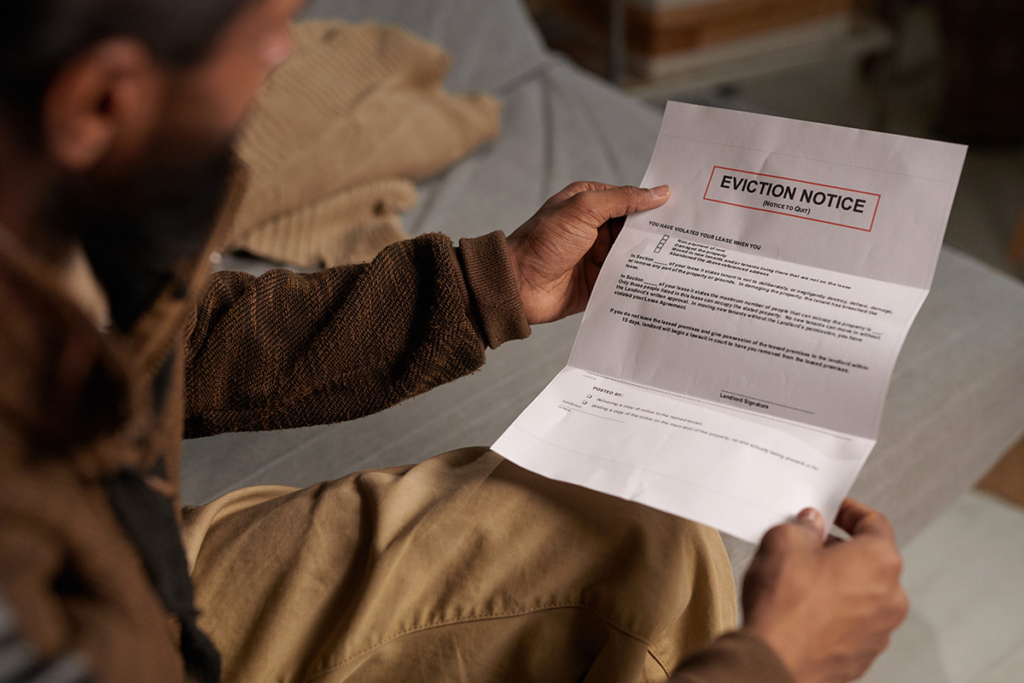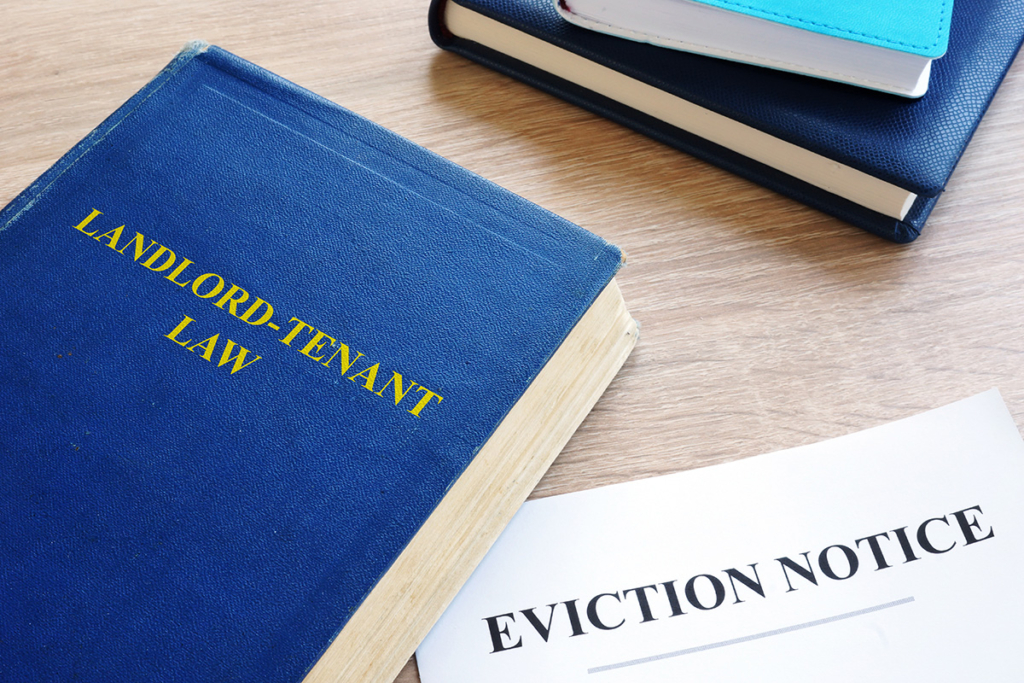Serving lawful notices in accordance with the Arizona Residential Landlord and Tenant Act (ARLTA) is a critical part of being a landlord, especially when participating in housing assistance programs like those supported by HOM. These programs come with additional responsibilities and opportunities for collaboration to support tenants and prevent evictions. Eviction notices are formal legal documents served to tenants to address lease violations or terminate a tenancy under ARLTA. Compliance with ARLTA's strict requirements is essential to avoid delays, dismissals, or legal challenges. The primary eviction notices — 5-day, 10-day, 30-day, and immediate notices for irreparable breaches — each serve distinct purposes.
When participating in a housing assistance program, landlords must provide a copy of all notices to HOM. We use these notices to initiate mediation with tenants and their support teams, offering resources and solutions to prevent evictions. By partnering with HOM landlords, service agencies, and tenants can work together to address issues collaboratively, reducing the need for legal action and supporting stable tenancies.
Below, we outline each notice, its legal basis, and how landlords can partner with HOM to resolve issues effectively.

Landlords must provide clear, legally compliant eviction notices to tenants, including copies to HOM when participating in housing programs.
5-Day Eviction Notice: Nonpayment of Rent
Purpose: The 5-day eviction notice is used for nonpayment of rent or health and safety violations, giving tenants five calendar days to pay the owed amount, remedy the issue, or vacate the property.
When to Use It: Issue this notice when a tenant fails to pay rent by the due date (typically the first day of the rental period, unless the lease specifies otherwise) or when a health or safety violation, such as unsanitary conditions, is identified. There is no mandatory grace period in Arizona, and weekends or holidays do not extend the timeline.
Key Takeaway: Before issuing a 5-day notice, contact us at landlordsupport@hominc.com to verify payment status or discuss the health/safety issue. Since we process tenant payments, a perceived nonpayment may be due to a processing delay. For health and safety concerns, we can engage the tenant's care team to address the issue promptly. Issuing a notice prematurely can cause tenant distress and unnecessary disputes. We will work with you to confirm payments or mediate resolutions.
10-Day Eviction Notice: Material Breach of the Rental Agreement
Purpose: The 10-day eviction notice addresses material breaches of the lease, such as unauthorized occupants, property damage, or other violations (excluding nonpayment of rent or health/safety issues). ARLTA recognizes two types of 10-day notices: a first notice for an initial breach and a second notice for a repeat violation within six months.
When to Use It: Use the first 10-day notice when a tenant violates a lease term, such as keeping an unapproved pet or causing disturbances. The tenant has 10 calendar days to remedy the issue or face eviction. If the same or similar breach occurs again within six months, a second 10-day notice can be issued, allowing eviction even if the tenant remedies the issue.
Key Takeaway: Document the breach thoroughly and notify HOM immediately. We can assist by mediating with the tenant and their care team to resolve disputes or provide support to prevent escalation. Providing a copy of the notice to HOM ensures we can intervene early to address the issue collaboratively.

Tenants receiving an eviction notice can work with HOM and their support teams to address issues before legal action is necessary.
30-Day Notice: Terminating Month-to-Month Tenancies
Purpose: The 30-day notice is used to end a tenancy or when a tenant has no lease, without needing to specify a cause (unless protected by anti-retaliation or discrimination laws).
When to Use It: Issue this notice to terminate a month-to-month tenancy, raise rent, or change lease terms. The tenant must vacate within 30 calendar days from the end of the rental period.
Key Takeaway: Coordinate with HOM before issuing a 30-day notice for program tenants. We can facilitate communication with the tenant or explore alternative housing solutions to minimize disruption. Providing a copy of the notice allows us to support the tenant's transition and ensure a smooth process.
Immediate Eviction Notice: Irreparable Breaches
Purpose: Immediate eviction notices are issued for irreparable breaches, such as serious criminal activity or significant property damage, requiring the tenant to vacate immediately without a cure period.
When to Use It: Use this notice for severe violations that pose an immediate threat, such as illegal activities or irreparable harm to the property. ARLTA allows for immediate eviction in these cases, but court action is still required to enforce it.
Key Takeaway: Notify HOM immediately when issuing an immediate eviction notice. Provide a copy of the notice so we can engage the tenant's care team and service agencies to address the situation, potentially offering alternative solutions to prevent further harm or facilitate relocation.

Properly issued eviction notices require understanding ARLTA rules and following documented legal procedures to avoid disputes.
Key Differences from a Landlord's Perspective
- 5-Day Notice (Nonpayment or Health/Safety): Used for nonpayment of rent or health/safety violations, with five calendar days to pay, remedy, or vacate. Verify payment status or health/safety concerns with HOM before issuing to avoid errors, as we process payments and can mediate resolutions for program tenants.
- 10-Day Notice (Material Breach): Addresses lease violations like unauthorized occupants or property damage. A first notice gives 10 calendar days to remedy; a second notice for a repeat violation within six months allows eviction even if remedied. Document breaches thoroughly and notify HOM to facilitate mediation and support.
- 30-Day Notice (Month-to-Month Termination): Used to end month-to-month tenancies or change lease terms, with 30 calendar days to vacate. Coordinate with HOM to ensure smooth communication and explore housing solutions for program tenants.
- Immediate Notice (Irreparable Breaches): Used for severe violations like criminal activity, with no cure period. Notify HOM immediately to engage support teams and explore alternatives.
For all notices, proper delivery (in person, certified mail, or posted with a mailed copy) is critical to avoid legal challenges. Always provide a copy of the notice to HOM to enable mediation and support.
Dos and Don'ts
- Do verify payment status with HOM before issuing a 5-day notice for nonpayment. If a tenant claims payment was made, pause the eviction process and contact us at landlordsupport@hominc.com. We can confirm our portion of the rent and follow up with the tenant or care team regarding their portion.
- Do provide a copy of all notices to HOM to enable mediation, support, and resolution efforts.
- Do document all violations thoroughly to strengthen your case in court.
- Do use proper delivery methods (personal, certified mail, or posting) and adhere to ARLTA's eviction timelines to avoid dismissals.
- Don't use self-help evictions (e.g., changing locks or shutting off utilities), as these are illegal in Arizona and can lead to tenant lawsuits.
- Don't issue notices prematurely without consulting HOM, especially for program tenants, as we can help resolve issues before escalation.
- Don't ignore tenant defenses, such as claims of improper notice, retaliation, or discrimination. Ensure notices are accurate and compliant.
Best Practices for Threshold Landlords
- Verify Payments with HOM: Before issuing a 5-day eviction notice for nonpayment, or mail landlordsupport@hominc.com to confirm the payment status. This prevents false notices and tenant distress.
- Document Everything: Keep detailed records of lease violations, notices served, and communications with tenants and Threshold.
- Follow Legal Procedures: Use proper delivery methods (personal, certified mail, or posting) and adhere to Arizona's eviction timelines to avoid court dismissals.
- Avoid Illegal Tactics: Never use self-help methods like changing locks or cutting utilities, as these can lead to legal liability.
- Communicate with Threshold: For any eviction notice involving a Threshold tenant, notify us immediately. We can mediate disputes, verify payments, or assist with tenant transitions.
- Know Tenant Defenses: Be prepared for tenants to claim improper notice, retaliation, or discrimination. Ensure your notices are accurate and compliant.
Resources: For official forms and guidance, visit the Arizona Judicial Branch Eviction Actions Portal.
The information provided on this blog is for general informational purposes only and is not intended as legal advice. For advice on your specific situation, please consult a qualified legal professional licensed in your jurisdiction.














